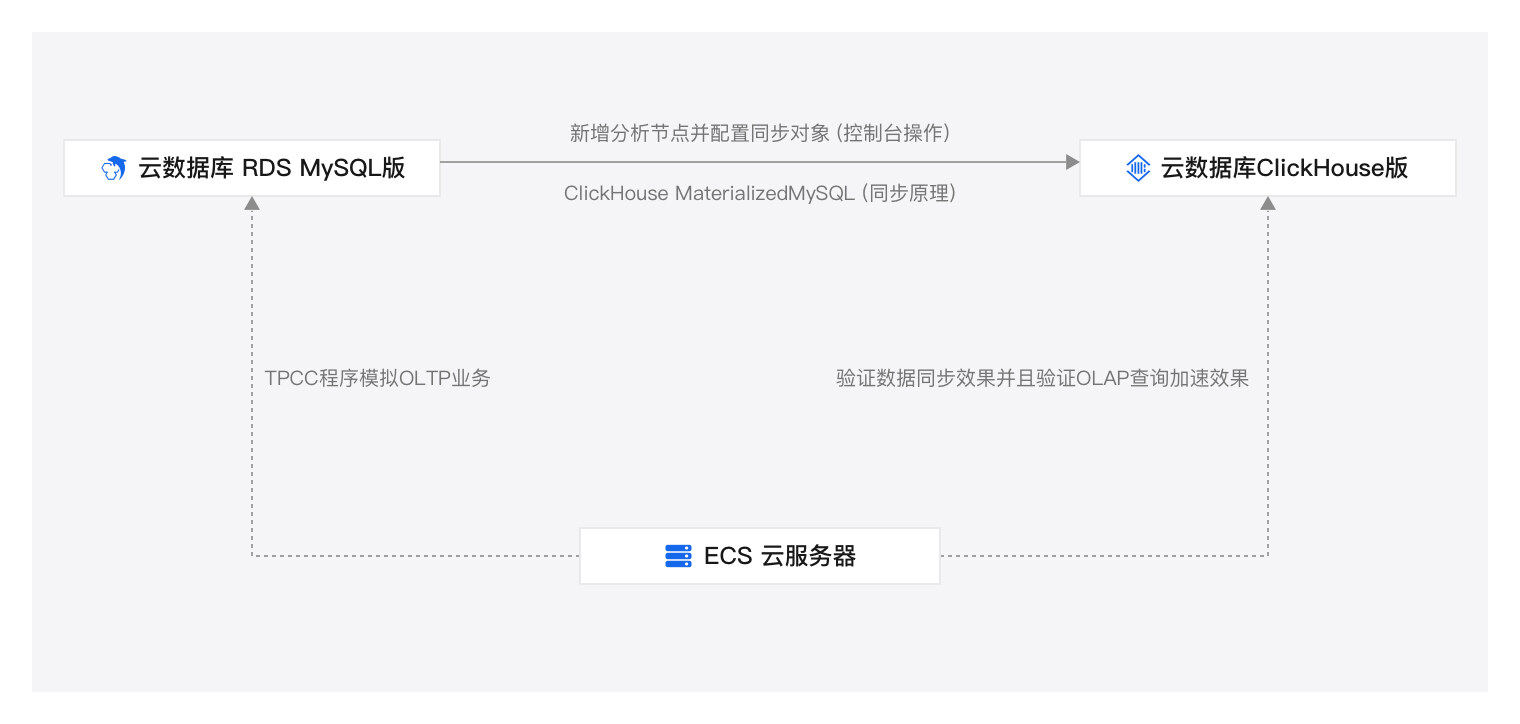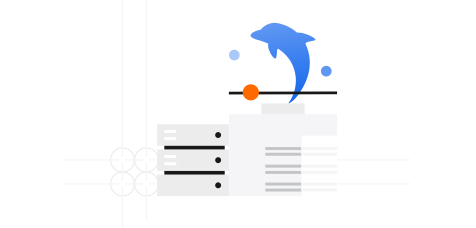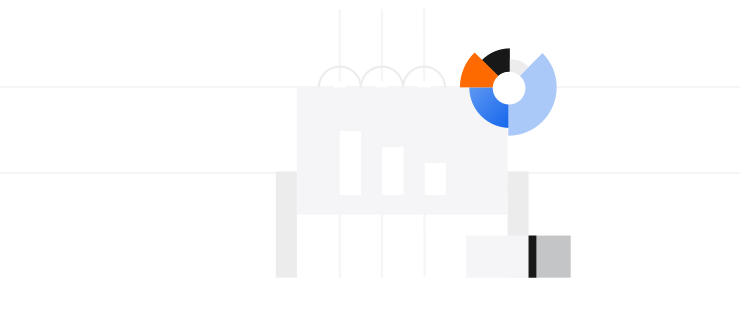RDS MySQL
-
Hot commodity -
Product Dynamics -
Content selection
█████ █████ █████

Stable and reliable Resolve availability issues Data cloud disk storage ensures data reliability through multi copy redundancy; The high availability version and cluster version adopt the primary and standby disaster recovery architecture, which can guarantee 99.99% availability at most; The cluster version can enable the MGR feature to achieve RPO=0 and zero data loss. 
Cost reduction and efficiency increase Address cost and scalability issues The billing method is flexible, and serverless achieves a cost reduction of up to 70%; Support ARM architecture, with the same experience and higher cost performance; It can be adjusted flexibly according to demand, without wasting resources. 
Database "autopilot" Solve complex operation and maintenance problems Support automatic capacity expansion, automatic SQL optimization, automatic SQL flow restriction, etc., realize database self-awareness, self repair, self optimization, self operation and maintenance, and self security, reduce the operation and maintenance burden, and reduce the operation and maintenance cost.
zero one Prepare environment and resources one Install MySQL Workbench locally. two One click application for RDS MySQL trial instance. zero two Create an account, set a white list, and open the Internet one Create a database account. two Add white list and open internet address. zero three Connect and use instances one Connect to the RDS MySQL instance. two Operate the database in MySQL Workbench.
-
RDS+ClickHouse building one-stop HTAP -
Real time synchronization of cache consistency between RDS and Redis -
System cloud scenario -
High cost performance scenario

Problem solving: complex synchronization configuration By default, you need to configure the database engine type as MaterializeMySQL and configure a series of complex and tedious related parameters to achieve data synchronization when creating a database in SQL in ClickHouse. Solution: Complex link maintenance By default, it is difficult to support maintenance operations such as synchronizing object objects, skipping synchronization errors, and restarting synchronization links. At the same time, it is impossible to control the flow of synchronization links, such as controlling the maximum number of rows pulled per second during full synchronization. Problem solving: relying on third-party synchronization tools In order to solve the problem of complex configuration and maintenance of MySQL to ClickHouse data synchronization, third-party synchronization tools are often introduced, but also bring high synchronization costs and tool maintenance costs.

Solution: It is difficult to select and develop cache schemes MySQL and Redis cache consistency is a key challenge. There are usually the following cache modes: Cache Side, Read/Write Through, Write Behind Caching, etc. Each implementation mode has different advantages and disadvantages, and the cost of development, operation and maintenance is high. Solution: The data synchronization service is unstable Data synchronization between MySQL and Redis depends on third-party tools to subscribe to BINLOG. There are service performance, service stability and other problems, which easily lead to high synchronization delay and data consistency problems, which ultimately affect the business. Problem solving: complex data synchronization Maintaining data consistency between MySQL and Redis is just a business need, but they are heterogeneous data synchronization. The implementation of business logic is complex and difficult to develop. There is no log data subscription, business logic writing, and end-to-end code examples of target data writing.

Elastic extension of architecture Use RDS MySQL and Redis to upgrade from a stand-alone manual deployment architecture to a cloud based fully hosted deployment architecture, so that the overall architecture has automatic elastic scalability, and can more flexibly respond to business access loads and high concurrency requests. High availability of business The active/standby architecture provided by the highly available form of RDS MySQL can support automatic database failover, with an SLA commitment of up to 99.99%, greatly improving the availability of the overall business and ensuring the continuous availability of the business. Convenient operation and maintenance management A series of database management functions and APIs of RDS MySQL, including failover, backup recovery, monitoring alarm, automatic elasticity, etc., can be used to more conveniently operate and optimize the business architecture.

Cellular deployment The system can be disassembled into multiple independent small systems for unit deployment according to regional rules. With the highly available or clustered version of RDS MySQL, distributed business nodes can achieve disaster recovery across different availability zones to ensure the stability and reliability of the core system. Cost reduction and efficiency increase The highly available ARM architecture of RDS MySQL can significantly reduce the cost of going to the cloud. At the same time, it can also increase the read-only instances of the ARM architecture to achieve read-write separation. It can also flexibly increase or decrease the number of read-only nodes. Efficient data synchronization The data synchronization and data subscription functions of DTS, combined with RDS MySQL, can ensure the full synchronization of data links, while taking into account the advanced requirements of data security, remote disaster recovery and so on.
New upgrade of RDS MySQL basic version The new upgrade of RDS MySQL Basic Edition, with the introduction of super cost-effective economic specifications of 1-core 1G and 1-core 2G, is specially designed for small and medium-sized enterprises. The monthly payment is as low as 18 yuan/month, and you can enjoy 75% off of the annual package! View details Learn about RDS MySQL in three minutes One stop grasp of the product advantages, usage scenarios and steps of RDS MySQL View details
Billing method
Pay as you go (pay as you go) definition : Pay as you go billing is a method of paying after using. Alibaba Cloud automatically deducts the cost of using resources from the account by the hour. Applicable scenarios : It is suitable for short-term needs. When used up, instances can be released immediately to save costs. Billing mode conversion : Pay as you go can be changed to monthly package. Serverless definition : Serverless is a dynamic billing method, which can dynamically match resources according to the instance load and charge in real time. You only need to pay for the actual usage, which saves a lot of costs. Applicable scenarios : The service has intermittent timing tasks, and the load fluctuates or is unpredictable. Billing mode conversion : Conversion to other billing methods is not supported.
network security Attack protection : RDS provides multiple attack protection means, including DDoS attack prevention, traffic cleaning, SQL injection detection, and multiple attack protection means. SSL encryption : Encrypting the network connection at the transport layer can improve the security and integrity of communication data and increase the response time of network connection.
data security TDE encryption : Implement real-time I/O encryption and decryption on data files to ensure the confidentiality of disk files and keep away from attackers who directly access data from files. Backup and file return : RDS provides two functions: data backup and log backup, restore by backup set and restore by point in time, and restore by backup set and restore by point in time.
Disaster tolerance safety Multi zone instance disaster recovery : Provide database availability higher than the physical server limit through asynchronous or semi synchronous data replication and efficient active/standby switching mechanism Disaster recovery instance : Real time synchronization between the primary instance and the remote disaster recovery instance is realized through DTS, which is suitable for business scenarios with strong demand for data reliability.
-
model selection -
charging -
stability -
Security Compliance
-
Q: RDS MySQL vs. self built MySQL database -
A: RDS MySQL provides highly available, reliable, secure, and scalable managed database services. The price of the same RDS MySQL database is lower than that of the ECS self built MySQL database and self purchased servers to build a MySQL database, which can save a lot View details
-
Q: How to choose the basic version, high availability version and cluster version? -
A: The basic version is a single node architecture, which is used for the development and testing environment of micro websites or SMEs. The high availability version is a high availability architecture of one active and one standby, which is used for production databases of large and medium-sized enterprises. The cluster version is an active multi standby architecture, which is used for a large number of peak traffic read requests and data intelligent analysis needs View details
-
Q: Are there any restrictions and precautions for RDS? -
A: When changing configuration, version upgrading, and failover, there is a flash break. When switching internal and external networks, the connection will be disconnected, and the instance with full storage space will be locked. View details
-
Q: Why does the subscription instance still generate a postpaid bill? -
A: The prepaid fees for monthly subscription instances do not include the following value-added capabilities: read-only instances (optional), cloned instances (optional), backup space (free quota), performance monitoring (optional), SQL insight and audit (optional), database agents (optional), internet traffic (optional), backup View details
-
Q: How to charge for RDS change (upgrade) configuration? -
A: Pay as you go instances are charged hourly, and the new price is charged hourly after configuration changes. When the yearly/monthly subscription instance is changed, the price difference or refund will be made according to the selected specification. View details
-
Q: How to reduce or control backup costs? -
A: The automatic backup of RDS instances does not support cancellation. If you do not have strong backup requirements, you can reduce the backup frequency and the backup space occupation through backup settings. View details
-
Q: How to optimize RDS MySQL instances with high load? -
A: RDS products have high CPU, memory, space, and IOPS utilization during daily use, which can be solved according to the specific causes of the problem. For details, see the official website documentation. View details
-
Q: RDS MySQL disk space is insufficient, can it be expanded? -
A: You can increase the available storage space by expanding the disk or clearing invalid data. If the current storage space capacity has reached the upper limit supported by the instance type, you need to change the instance storage space while upgrading the instance type. View details
-
Q: How does RDS MySQL achieve read-write separation? -
A: You can open an exclusive proxy service and add a read-only node to the primary instance. Without modifying the application code, the read-only request is automatically forwarded to the read-only instance node associated with the primary instance through the exclusive proxy to achieve read performance expansion. View details
-
Q: Does RDS MySQL support SQL log or operation log auditing? -
A: The highly available or clustered version of RDS MySQL supports SQL insight and audit functions. On the basis of full request and security audit, it integrates search, SQL insight, security audit, traffic playback and pressure testing, and other functions to help you better obtain specific information, ranking, and other SQL statements View details
-
Q: How does RDS MySQL manage database accounts and permissions? -
A: RDS MySQL supports the creation of database accounts and authorization management through the console, SQL statements, APIs, etc. It does not support system level root permissions or accounts with super permissions. View details
-
Q: What qualifications does RDS have? -
A: Alibaba Cloud cloud computing services (including database services) have passed ten security compliance certifications, including ISO 20000, SOC, PCI-DSS, and the third level of equal protection. Comply with the international standard ISO/IEC 27001. View details
RDS MySQL on Reliance on Heaven releases technical dividends On May 7, 2023, the prices of Alibaba Cloud Yaochi database RDS MySQL and RDS PostgreSQL all series of ARM architecture directories will be reduced by a maximum of 40%. Behind the adjustment of the product business strategy is the dividend release brought by the continuous software and hardware collaborative technology optimization 2023-05-30 Start free trial of RDS MySQL Serverless RDS MySQL Serverless instance is a database launched by Alibaba Cloud for small and medium-sized enterprises or individual developers. It provides the real-time flexibility of CPU and memory, and the ability to charge computing resources on demand. It has the advantages of low resource consumption, simple use, flexibility and low price. 2023-05-12 RDS MySQL serverless evaluation RDS MySQL Serverless can pay as you need, pay as you use, and dynamically match resources. It is very cost-effective if it is used in the short term. For example, it is convenient to buy the product temporarily to improve the performance dynamically if the database access has soared due to activities in a certain period of time 2023-05-14 Teach you how to migrate self built MySQL to RDS MySQL instance Through this tutorial, you can learn to use DTS to migrate self built MySQL to RDS MySQL instance 2023-05-12 SQL Challenge, use RDS MySQL Serverless resources to tune SQL for free Alibaba Cloud developer community and database team jointly held the "Alibaba Cloud Database SQL Challenge". Technical experts from Alibaba Cloud database team prepared three questions for developers from simple to deep. Come and see how good you are at writing SQL. In addition, we also provided developers with free RDS MySQL Serverless resources for three months, so that they can experience the convenience of cloud development while participating in the competition 2023-05-20














